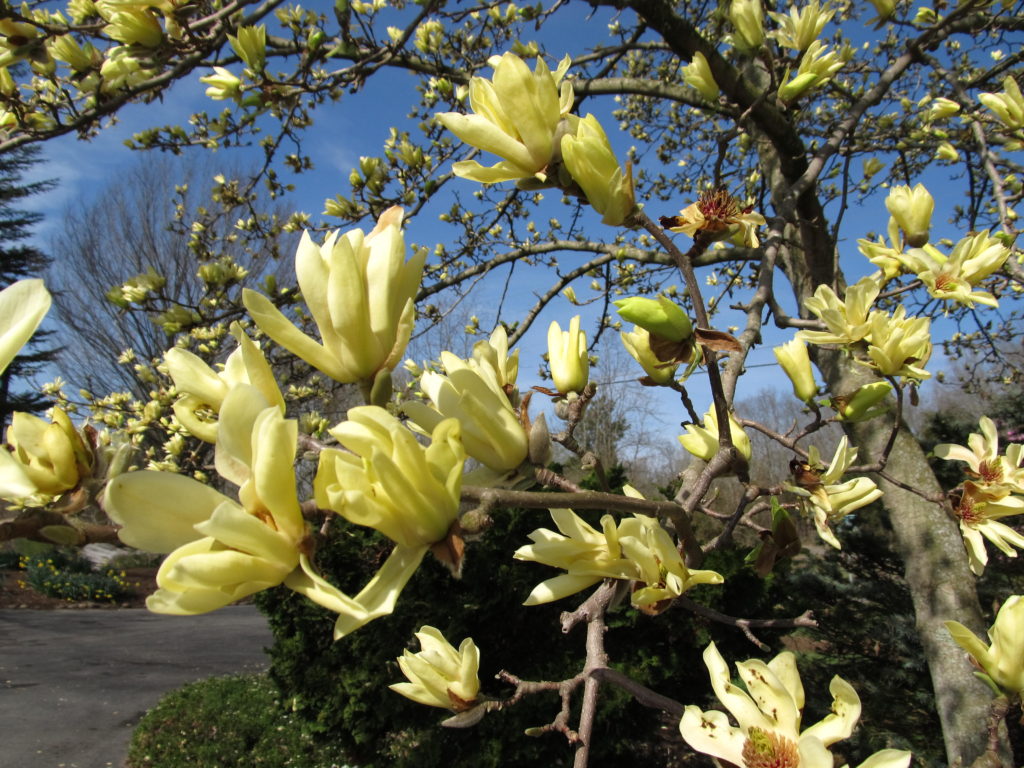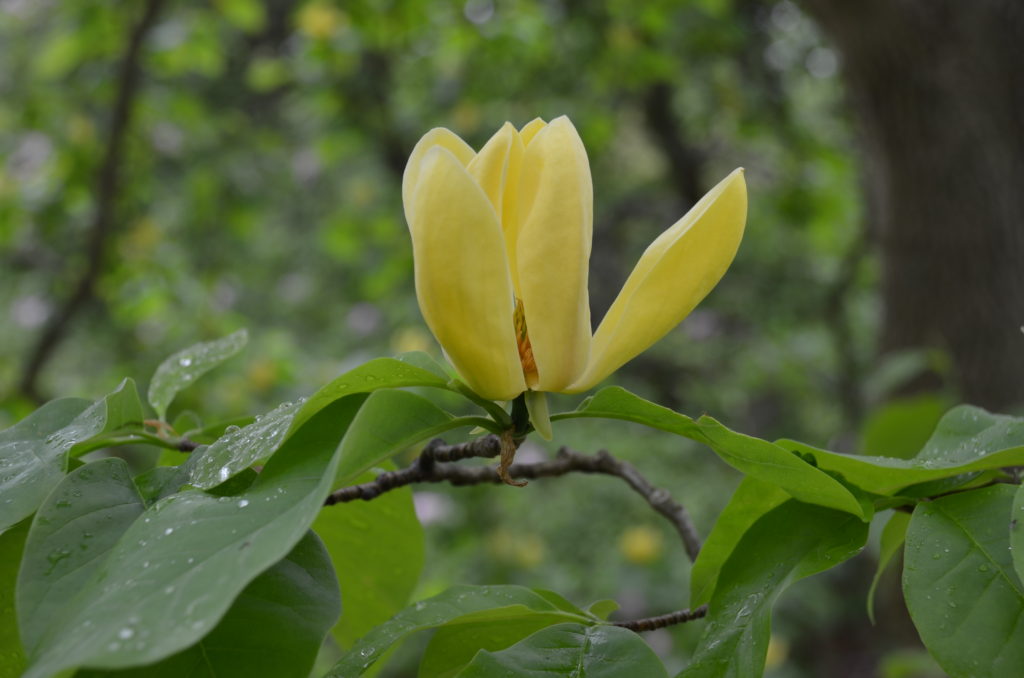
Deciduous magnolias (Magnolia spp.) are popular landscape plants because of their bright cheery spring flowers. Breeding efforts back in the 1970’s created a new class of deciduous yellow-flowering magnolias. In 1978, the Brooklyn Botanical Gardens introduced the first, Magnolia ‘Elizabeth’ (creamy white). Yellow magnolias are hybrid crosses between M. acuminata, M. subcordata, M. denudata, among species. Several are designated Magnolia x brooklynensis.
The thick fleshy petals on magnolias are called “tepals”. Depending on the cultivar, flower colors range from oft white, light pink, and yellow color shades of creamy to dark yellow blooms. Growth rate, bloom time, tree growth rate, and disease resistance also differ. The greatest concern is that many varieties bloom in very early spring and are susceptible to frost injury in U.S. hardiness zones 6 and 7.
‘Gold Star’, ‘Golden Gala’, ‘Stellar Acclaim’, ‘Sun Spire’ and ‘Sundance’ have light yellow tepals. ‘Goldfinch’, ‘Butterflies’ and ‘Elizabeth’ are among the earliest to bloom; ‘Elizabeth’ has one of the longest flowering periods. ‘Judy Zuk’ and ‘Yellow Bird’ exhibit dark yellow tepals and usually are among the last to bloom. ‘Woodsman’ exhibit unique multicolored pink, white and green tepals.

In an evaluation of 30 cultivars by Dr. Donna Fare, at the USDA Research Station in McMinnville, Tennessee, the now retired ARS plant scientist found ‘Carlos’ and ‘Gold Star’ grew the tallest selections at 23 feet (7 m) each after ten years. ‘Golden Gala’, ‘Gold Star’, ‘Carlos’, ‘Lois’, and ‘Yellow Lantern’ had the largest trunk diameters averaging 1 inch (2.5 cm) per year. ‘Sun Spire’ had one of the smallest trunk diameters and showed an annual increase of about 1.5 cm per year.
Yellow magnolias generally grow 30 to 40 feet tall and 20 to 25 feet wide at maturity. Plant a single tree as a specimen, or several in groupings along a drive or walkway. These magnolias make wonderful shade trees planted near patios, low decks and other outdoor living areas. Trees can also be grown in large pots, planters and containers of 18 inches or more in diameter.
Yellow magnolias are easy to grow in moist, well-drained, acidic, fertile soil and full to partial sun. Magnolias prefers full sun for best flowering in northern climes (Zones 4-7), and in partially shaded understory in the South (Zone 8). Pruning usually isn’t necessary; remove stray and broken branches after spring flowering. Fertilize in early spring with a slow release balanced product like Osmocote® or Nutricote®.

 Posted in
Posted in 
